VRS DirectForce Pro Pedals – Review
Hardly any pedal set is currently sold out as often as the DirectForce Pro pedals from VRS. Are the pedals worth the money and is the hype justified? We are testing the Loadcell pedals and taking them for a ride.
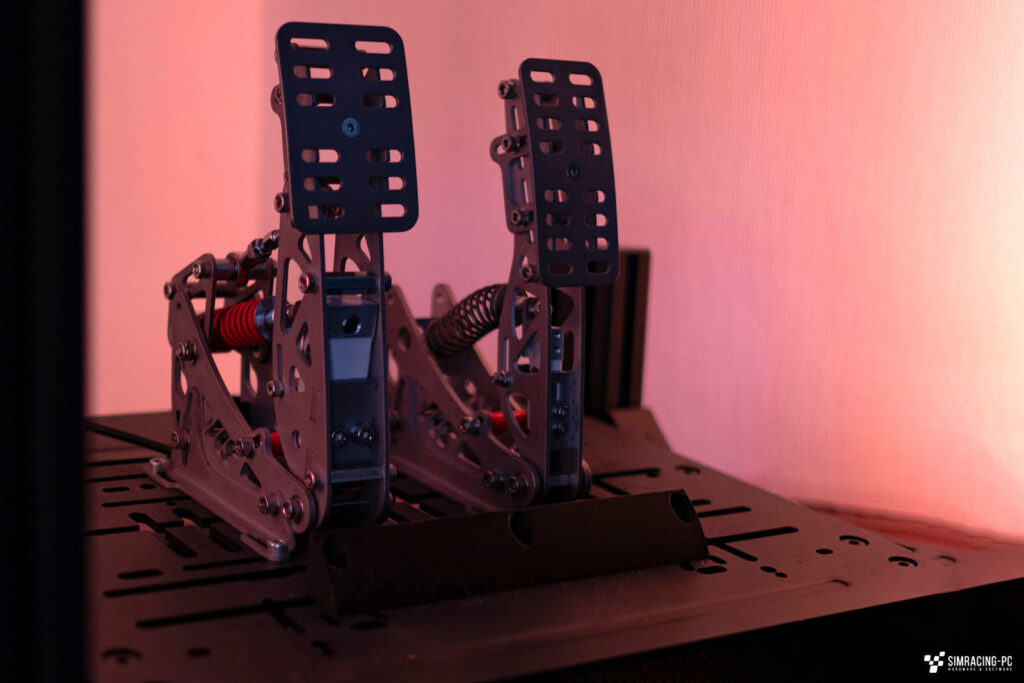
Ordering and shipping
If you want to buy the pedals now, you have to be patient or very quick. Some stores offer the VRS pedals for pre-order, others often release their stock for sale with very little notice. As a rule, the following prices are quoted without shipping:
- 2-piece set (throttle and brake): 597€
- Clutch: 227€
A baseplate or other accessories directly from VRS are not currently available for the pedals.
Scope of delivery
The chapter on the scope of delivery is quickly dealt with, as VRS takes a rather spartan approach here. In addition to the pedals themselves and a controller box with USB cable, only a second spring with additional spacers is supplied. You don’t get any assembly material or detailed instructions:
- Pedals
- controller
- USB cable
- Alternative spring (blue spring pre-assembled, red spring optional)
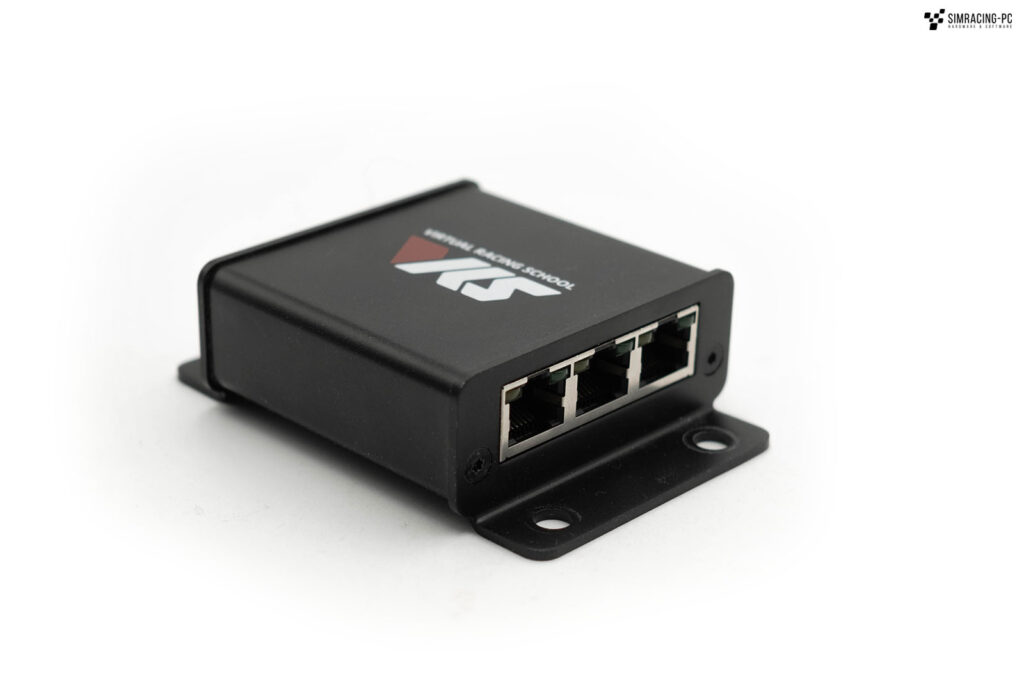
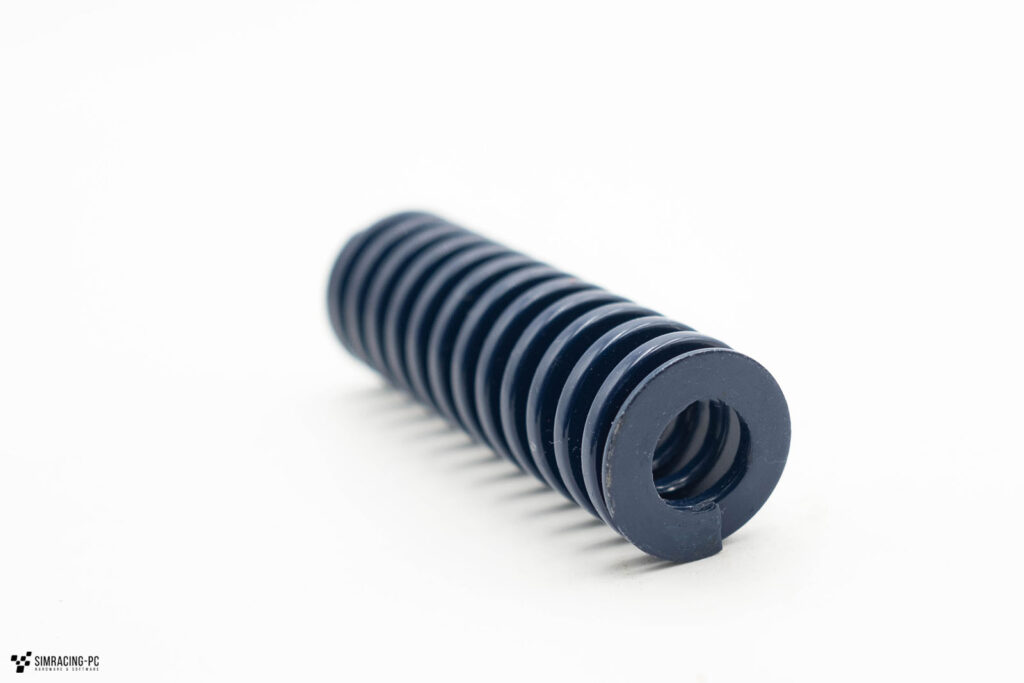
Compatibility
The pedals are designed exclusively for use on a PC. Consequently, they are not suitable for use on consoles. For operation on a PC, all you need is a free USB port; the pedals are then compatible with all current simracing titles.
Mounting
For mounting the pedals, four slotted holes are provided on the underside of each pedal, which can be used to attach the pedals directly to an existing mounting plate or aluminum profiles, for example. This requires four screws (e.g. M6) and suitable nuts or T-nuts. In many cases, the use of a suitable baseplate and/or a heel support is also highly recommended.
For the test, the pedals were mounted directly onto the mounting plate of a Trak Racer Rig (TR80 Lite) and combined with a heel support. The controller box was then simply hidden under the rig, but can also be permanently mounted with two screws on each side if required.
Pedals
VRS states that it uses “FEA optimized laser cut stainless steel” and “custom PTFE inserts” for the pedals. The latter are intended to ensure particularly smooth operation. The overall construction is very solid and, in combination with hardly any lateral play, the pedals certainly belong to the high-end category in this category.
The pedals also score highly in terms of adaptability. The angle of the pedals can be adjusted via slotted holes (21 degrees difference between the flattest and steepest pedal position) on the bracket and on the pedal plates. The height can also be adjusted via slots in a range of around three centimetres. The same applies to the depth of the individual pedals: here, too, there is a range of two centimeters, also adjustable via slotted holes.
Unfortunately, VRS did not include detailed operating instructions with the pedal set. The user must either find the information themselves via various channels (YouTube, Discord, etc.) or figure out the settings themselves.
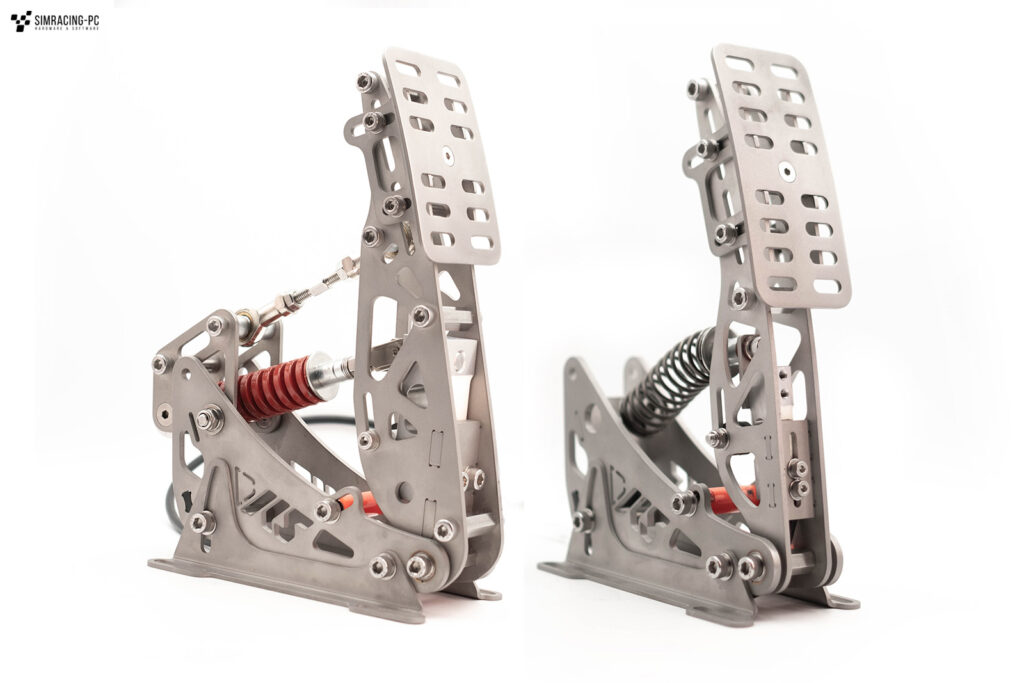
Throttle
The throttle pedal immediately catches the eye of the simracing enthusiast with its “strangely curved” spring, which at first glance appears fragile and is fundamentally different from most other designs. This type of power transmission to the load cell means that no additional support is required, eliminating unwanted friction when the throttle is pressed. This results in a very smooth pedal feel, especially in conjunction with the ball bearings used.
The following settings can be made:
- Travel: The built-in end stop can be used to limit the maximum travel of the throttle pedal. The adjustment is made with an Allen key. When tightening the screws, the end stop tends to slip, so a little bit of precision is required here.
- Preload: The preload of the spring can be changed via the thread on the bracket at the rear. Care must be taken here to ensure that the spring is not deflected too much at full deflection to avoid damage. To do this, a suitable position for the Loadcell must be selected, which is fixed in place with two screws.
- Loadcell: As already mentioned, this can be adjusted in height, which primarily changes the maximum spring force.
- Position of the pedal plate: By moving the pedal plate up or down, the required force and the maximum pedal travel are changed accordingly.
- Lower height: less travel, more force
- Higher height: more travel, less force
VRS states that up to 58.1 millimetres of travel or 8.4 kilograms of maximum force can be set using the respective extreme settings. The smallest possible pedal travel is 21.5 millimetres.
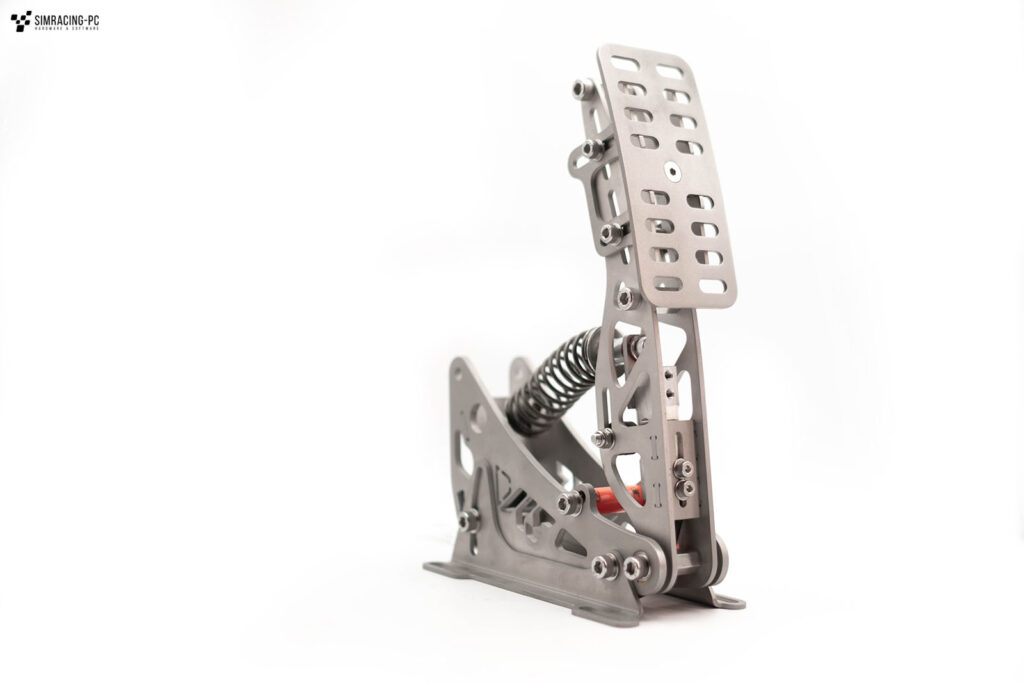
Brake
It is also immediately noticeable that, unlike most manufacturers, VRS does not use rubber elastomers for the brakes. Instead, only a single spring is used. This is combined with an adjustable pull rod and thus enables different brake profiles. The following settings are possible:
- Spring: In addition to the blue spring fitted as standard, VRS also supplies a red spring, which is significantly harder and designed for a maximum braking force of 130 kg. The blue spring enables a braking force of up to 65 kg (in each case with standard setting). Replacement is possible without tools.
- Braking force curve (via the tie rod): The brake feel can be fundamentally changed with the pull rod. To do this, it is loosened with two wrenches (not included in the scope of delivery) and adjusted in length. When doing so, care must be taken to ensure that sufficient thread remains on both sides (at least 5 mm):
- Shorter distance: This makes the brake pedal very soft in the initial phase.
- Longer distance (or more exposed thread): This makes the brake pedal much harder in the initial phase. It is important to ensure that the preload of the spring is adjusted accordingly so that the spring is already slightly preloaded even without force and cannot move freely.
- Preload: To do this, the entire spring construction must be removed, which can be a little tricky without practice due to the limited space available. The construction is then loosened with the help of three(!) wrenches (10mm x 2 , 12mm) and spacers can be added or removed. This process is not very intuitive at first and the correct amount of spacers is not always obvious at first glance without the relevant experience. This is where a “trial and error” phase sets in.
- Pedal plate position: Moving the pedal plate up or down also changes the amount of force required and the maximum pedal travel.
- Lower height: less travel, more force
- Higher height: more travel, less force
Even if the settings can generally be made in a reasonable amount of time, they are still rather difficult. Above all, the tools required, especially the wrenches that are not included in the scope of delivery, are definitely a negative factor here. Even though most Simracers will certainly have these in their toolbox or know how to help themselves in some other way, other manufacturers now offer much more convenient adjustment options, in some cases even without any tools required.
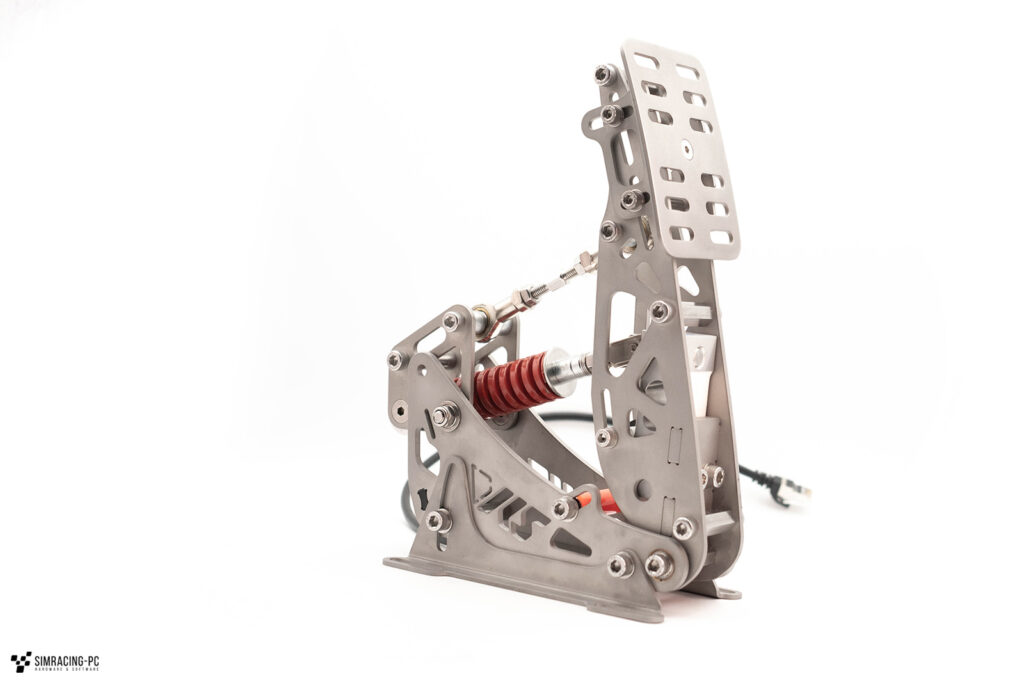
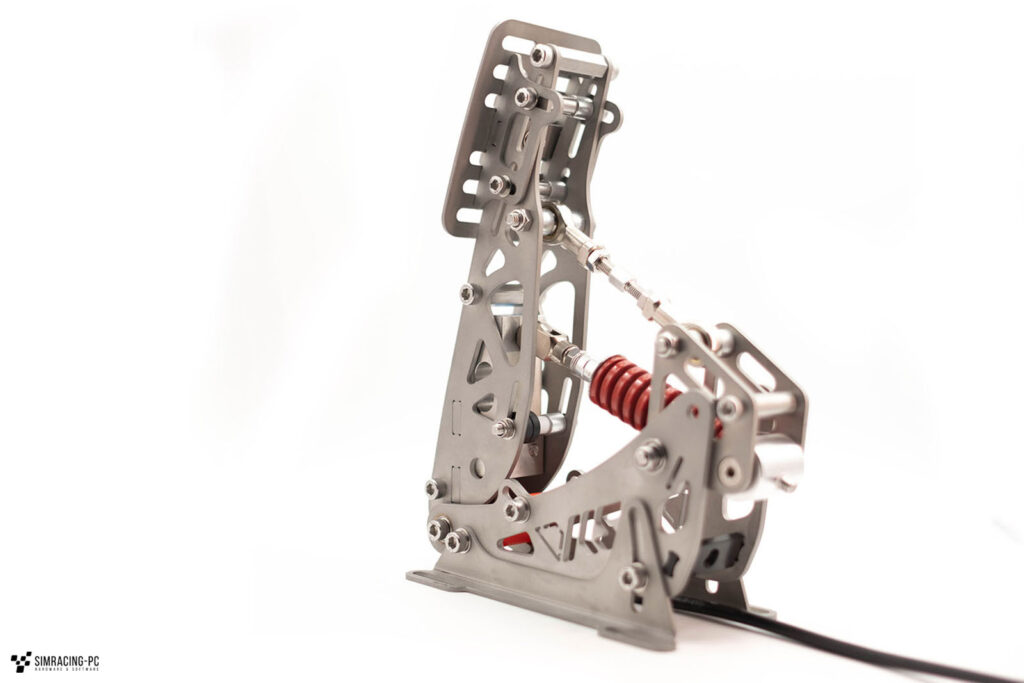
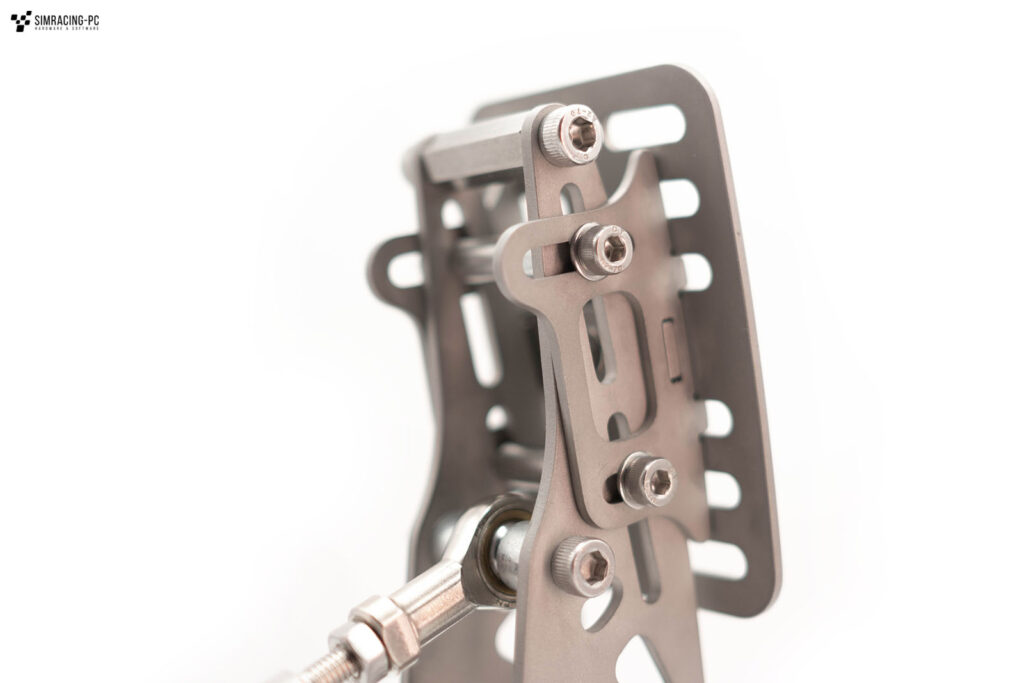
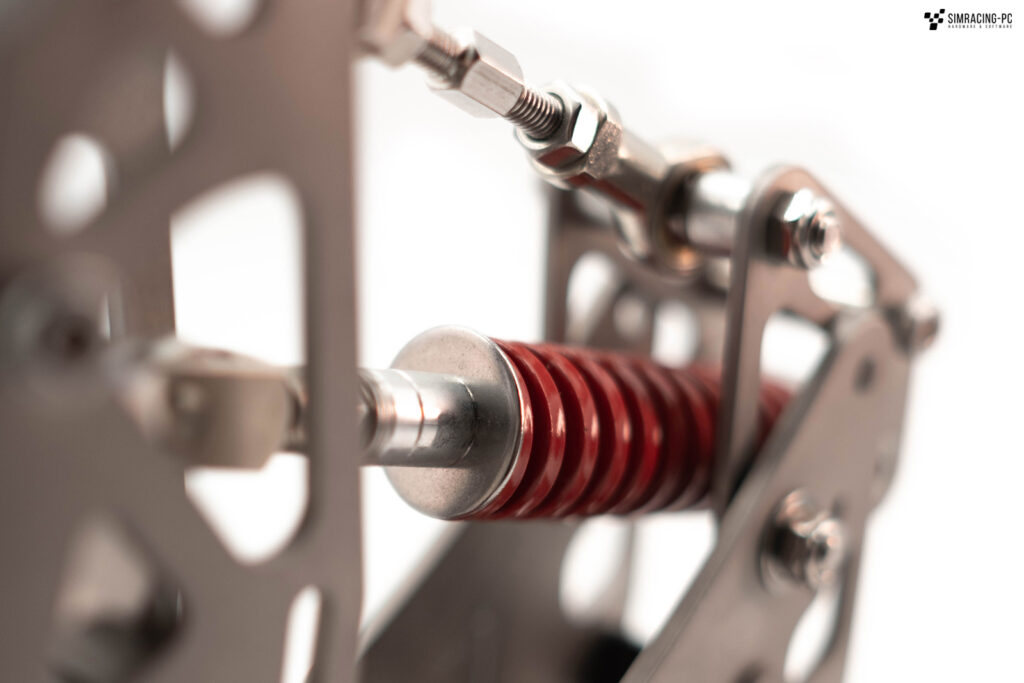
Controller-Box
The individual pedals are each equipped with a cable which, like the USB cable for the connection to the PC, is plugged directly into the controller box (see picture in the Scope of delivery section). The box is made of aluminum and can be easily hidden due to its small size or screwed directly to the rig using the four mounting holes.
Software
The software provided by VRS is very user friendly. Even if at first glance you feel like you’ve been transported back a decade in terms of design, all the important settings can be made in seconds and profiles can be saved and loaded. Even if selectable predefined pedal curves or more adjustable points for their configuration would certainly be a nice bonus, the software is still completely sufficient and very easy to understand.

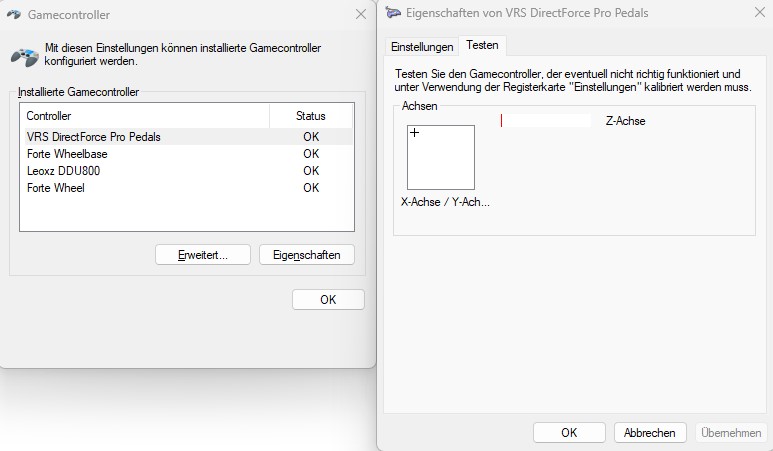
Driving
In the real-world test, the VRS pedals definitely have nothing to hide. The throttle pedal can be controlled very sensitively thanks to the chosen design, and the concept of the guide-less spring pays off here despite the unusual look. Only the rather loud end stop could be a source of annoyance for people who are very sensitive to noise.
The brake concept also proved successful in the practical test. Even if you need a short time to get used to it coming from pedals with a normal elastomer construction, the brake is very comfortable to use. When trail-braking in particular, it feels very good on the foot and can be adjusted very finely. Another general advantage is that the spring retains the same characteristics over a long period of time (in contrast to a plastic elastomer, which generally no longer has 100% of the same characteristics with increasing age). However, this cannot be shown in concrete figures during a normal pedal test (usually four to eight weeks). After just a few laps, however, it became clear during the test that the red spring is probably the right choice for most simracers (with a solid rig), as it allows significantly higher braking forces.
Modding
Due to the lack of a heel rest, it quickly became clear that a 3D print would have to provide a suitable solution. A printed heel rest was used to make operating the pedals a little more comfortable.
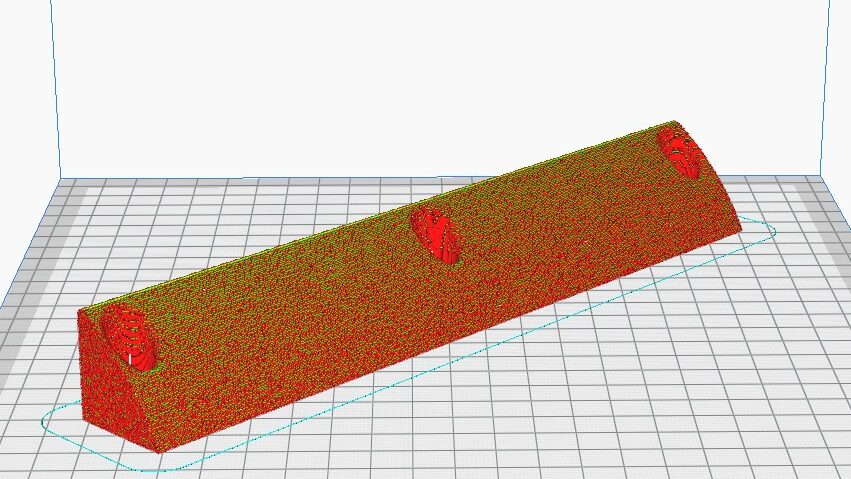
Conclusion
With the DirectForce Pro pedals, VRS has made a successful debut in the simracing pedal market. A solid construction with high-quality materials paired with very good performance definitely makes hearts beat faster. Many adjustment options on the hardware side and easy-to-understand software are, however, offset by a very limited scope of delivery without mounting material and tools. Overall, the pedals are clearly aimed at experts, which is underlined once again by the fact that VRS does not offer a baseplate or other accessories such as a heel rest for sale. If you don’t have a problem with this or even already own a rig with a suitable mounting option, you can expect a very good pedal set at a very fair price that can easily compete with pedals in the price range up to €1000.
Pros
- Very good brake feell
- Very good throttle pedal
- Many adjustment options
- Materials
- (Software)
- (Price/performance ratio)
Cons
- Complicated adjustments
- Scope of delivery
- (Accessories from third-party suppliers only)












In the section where you are describing how to adjust the force curve of the VRS brake pedal, I think you have described it incorrectly. You say “Longer distance (or less exposed thread)”, but adjusting for longer distance exposes MORE thread, not less. Also, VRS refers to the rod as a “tie rod”, not a “pull rod”.
https://youtu.be/sUzUO3CbyGQ?feature=shared
Hello Ronald,
thanks for the correction. Something must have got lost in translation!
Kind regards,
Max